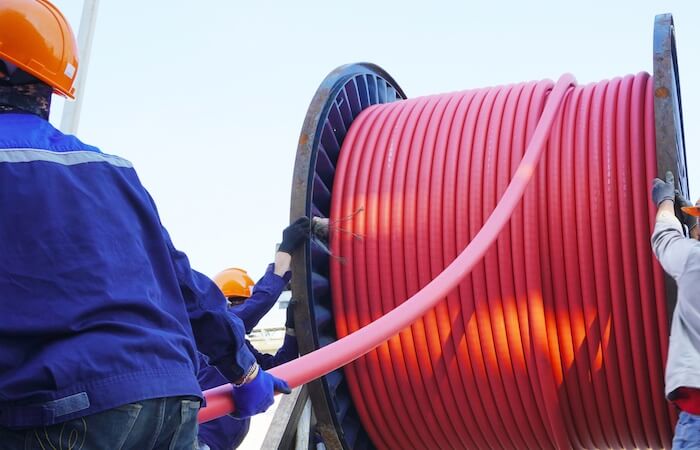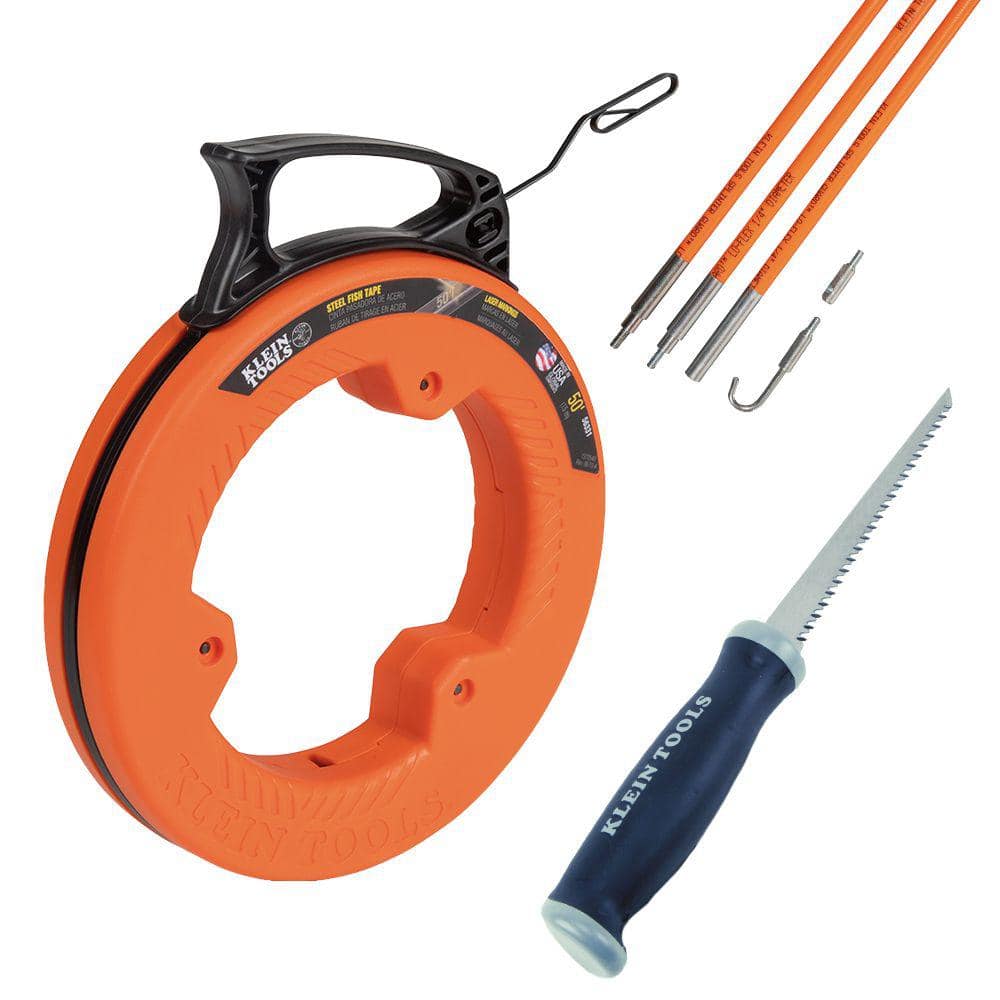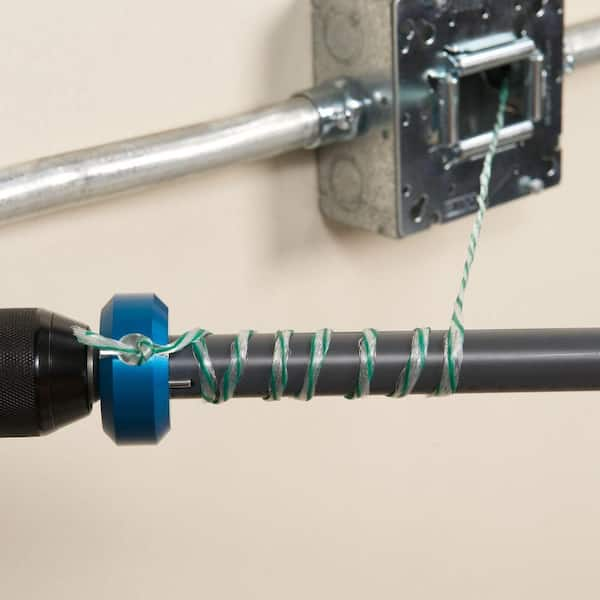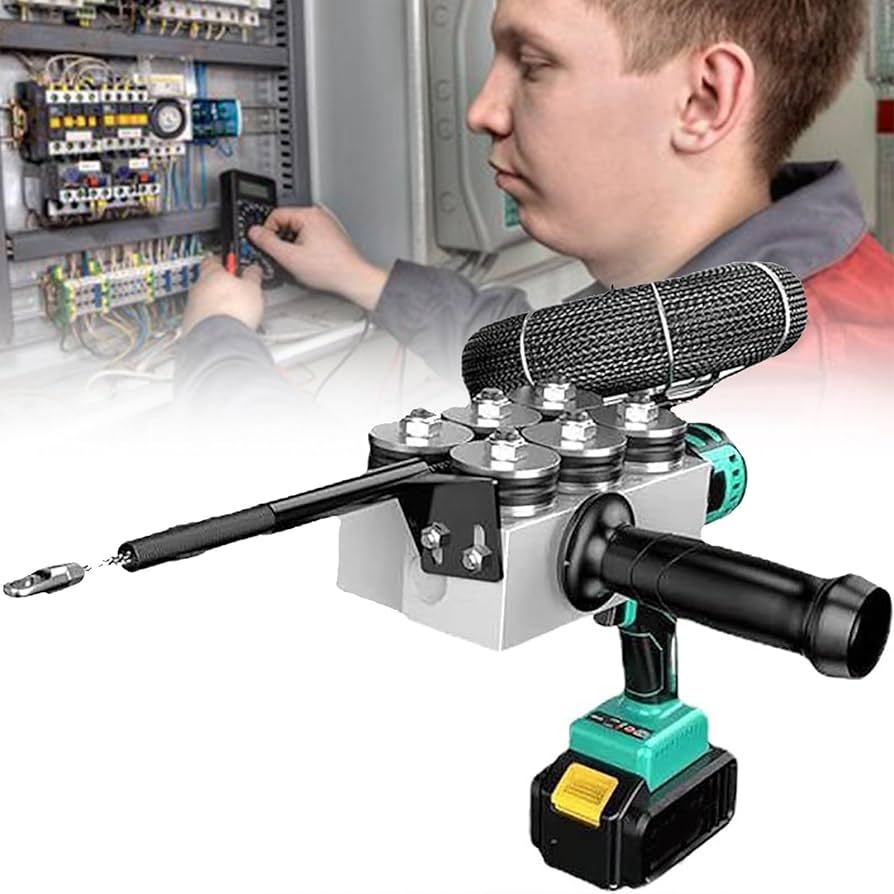Pulling wire tools are essential for electricians to route cables through walls, conduits, and other tight spaces efficiently. These tools simplify the process, saving time and effort.
Electricians rely on a variety of pulling wire tools to handle complex wiring tasks. Fish tapes, for instance, are long, flexible strips that guide wires through conduits. Fish rods, another common tool, are stiff rods that help push or pull wires through difficult paths.
Cable pullers and wire pulling grips offer additional assistance for more demanding jobs. Using the right tool ensures a smooth, hassle-free wiring process. Investing in quality pulling wire tools enhances productivity and safety, making them indispensable in any electrician’s toolkit.
Introduction To Pulling Wire Tools
Pulling wire tools are essential in electrical work. They help in running wires through walls, ceilings, and conduits. These tools save time and reduce effort. Using the right tools ensures safety and efficiency.
Importance In Electrical Work
Electrical work requires precision and safety. Pulling wire tools make the job easier and safer. They help in avoiding damage to wires and structures. These tools also prevent injuries to electricians. Proper tools ensure a neat and professional installation.
Common Applications
Pulling wire tools have various applications in electrical work:
- Running wires through walls
- Pulling cables through conduits
- Installing network cables
- Setting up home entertainment systems
- Connecting electrical panels
| Tool | Application |
|---|---|
| Fish Tape | Pulls wire through walls and conduits |
| Wire Pulling Lubricant | Reduces friction during wire pulling |
| Wire Pulling Grips | Holds wires firmly during pulling |
Types Of Pulling Wire Tools
Pulling wire tools make electrical work easier and safer. Each tool serves a specific purpose and offers unique benefits. Understanding the types of pulling wire tools is crucial for efficient work. This section covers the essential tools: fish tapes and cable pullers.
Fish Tapes
Fish tapes are long, flexible tools used to route new wiring through walls and electrical conduits. Made from materials like steel, fiberglass, or nylon, fish tapes can vary in length and stiffness.
- Steel Fish Tapes: Durable and ideal for long runs but can rust.
- Fiberglass Fish Tapes: Non-conductive and resistant to corrosion, suitable for shorter runs.
- Nylon Fish Tapes: Lightweight, flexible, and easy to maneuver, but less durable.
Fish tapes come with a reel, making them easy to store and transport. Many fish tapes also have a marking system, helping you measure the distance accurately.
Cable Pullers
Cable pullers assist in pulling heavy or long cables through conduits. They can be manual or powered, with various features to meet different needs.
- Manual Cable Pullers: Operated by hand, suitable for light-duty tasks and short distances.
- Powered Cable Pullers: Use motors to pull cables, ideal for heavy-duty tasks and long distances.
Some advanced cable pullers come with digital readouts, making it easy to track tension and distance. They also offer different pulling speeds, allowing you to adjust according to your project’s needs.
Choosing the right cable puller depends on the weight and length of the cable, as well as the complexity of the conduit path.
Choosing The Right Tool
When working on wiring projects, selecting the right pulling wire tool is crucial. The correct tool makes your job easier and ensures safety. This guide will help you choose the best tool for your needs.
Factors To Consider
Several factors should influence your choice of a wire-pulling tool. These include the type of project, the environment, and the tool’s ease of use.
- Type of Project: Different projects need different tools. For short distances, simpler tools work best. For longer distances, advanced tools are better.
- Environment: Consider whether you are working indoors or outdoors. Indoor projects often have tighter spaces. Outdoor projects may face weather challenges.
- Ease of Use: Choose tools that are easy to handle. This can reduce fatigue and improve efficiency.
Tool Material And Durability
The material and durability of a pulling wire tool are important. A durable tool will last longer and perform better.
Here is a quick comparison of common materials:
| Material | Advantages | Disadvantages |
|---|---|---|
| Steel | Very strong and durable | Can be heavy |
| Fiberglass | Lightweight and flexible | May break under heavy stress |
| Nylon | Flexible and easy to use | Less durable than steel |
Choose a material that suits your project’s demands. For heavy-duty tasks, steel might be best. For lighter tasks, fiberglass or nylon could be more suitable.

Credit: onepullwire.com
Safety Considerations
Working with pulling wire tools requires careful attention to safety. This ensures a secure and efficient operation. In this section, we’ll explore key safety considerations.
Personal Protective Equipment
Wearing the right Personal Protective Equipment (PPE) is essential. PPE includes gloves, safety glasses, and hard hats. These items protect you from potential hazards.
- Gloves: Protect your hands from cuts and abrasions.
- Safety Glasses: Shield your eyes from debris and sparks.
- Hard Hats: Prevent head injuries from falling objects.
Safe Handling Practices
Using proper safe handling practices is critical. This minimizes risks and ensures smooth operations.
- Inspect Tools: Always check tools for damage before use.
- Clear Work Area: Keep the workspace free of obstacles.
- Follow Instructions: Adhere to manufacturer guidelines.
Maintaining these practices protects you and your coworkers. Always prioritize safety when using pulling wire tools.
Maintenance Tips
Maintaining your pulling wire tools ensures their efficiency and longevity. Proper care can make your tools last longer. Here are some essential maintenance tips.
Cleaning And Storage
Always clean your tools after each use. Remove any dirt, dust, or residue. Use a soft cloth to wipe them down. For stubborn grime, use a mild cleaner.
Store your tools in a dry, cool place. Moisture can cause rust. A toolbox with compartments can keep them organized. This prevents damage and makes them easy to find.
| Tool | Cleaning Method | Storage Tip |
|---|---|---|
| Wire Puller | Wipe with a damp cloth | Store in a toolbox |
| Fish Tape | Use a mild cleaner | Hang on a pegboard |
| Cable Puller | Brush off debris | Keep in a dry place |
Regular Inspection
Inspect your tools regularly. Look for any signs of wear or damage. Check the handles, tips, and moving parts.
Replace any worn or broken parts immediately. This ensures safety and efficiency. Keep a checklist to track your inspections.
- Check handles for cracks or splits
- Examine tips for wear
- Inspect moving parts for smooth operation
A well-maintained tool is safer and more efficient. Regular care saves you time and money in the long run.

Credit: www.homedepot.com
Advanced Techniques
Advanced techniques in pulling wire tools can make your job easier. They help you save time and avoid frustrations. Learning these methods ensures smoother and quicker installations. Let’s explore some of the advanced techniques that can enhance your wire-pulling skills.
Using Lubricants
Using lubricants can make wire pulling much smoother. A lubricant reduces friction between the wire and conduit. This simple step can prevent wire damage. To apply, use a wire-pulling lubricant gel.
- Wear gloves to protect your hands.
- Apply a generous amount to the wire.
- Spread it evenly along the wire length.
Lubricants are especially useful for long or complex pulls. They help maintain wire integrity and reduce physical strain. Always keep a good quality lubricant in your toolkit.
Navigating Complex Paths
Navigating complex paths can be challenging. Proper planning can ease this process. Use a fish tape or a fiberglass rod to guide the wire.
- Inspect the path for obstacles.
- Plan the route before starting.
- Use fish tape for sharp bends.
Fish tapes come in various lengths and materials. Choose one that suits your specific job. For tight spaces, a flexible fiberglass rod can be more effective.
| Tool | Best Use |
|---|---|
| Fish Tape | Sharp bends |
| Fiberglass Rod | Tight spaces |
Combining these tools can help you navigate any complex path with ease. Always inspect your tools before starting your work. This ensures they are in good working condition.
Troubleshooting Common Issues
Pulling wire tools can be tricky. Sometimes you face issues that slow you down. This section helps you solve common problems. Use these tips to keep your project on track.
Dealing With Snags
Snags happen when the wire catches on something. They can cause delays. Follow these tips to deal with snags:
- Inspect the path before pulling the wire.
- Use a fish tape to guide the wire smoothly.
- Lubricate the wire to reduce friction.
Always be gentle. Forcing the wire can cause damage.
Avoiding Damage
Wire damage can be costly. Avoid these common pitfalls:
- Use proper pulling tools designed for the job.
- Check for sharp edges along the pulling path.
- Avoid over-bending the wire to prevent breaks.
Regularly inspect the wire for any signs of wear. Catching issues early can save time and money.
| Problem | Solution |
|---|---|
| Snags | Inspect path, use fish tape, lubricate |
| Damage | Use proper tools, check for sharp edges, avoid over-bending |
Future Trends In Pulling Wire Tools
The world of pulling wire tools is evolving rapidly. New trends are shaping this industry. These trends focus on innovation and technology. Let’s explore these exciting changes in detail.
Innovative Designs
Designs of pulling wire tools are becoming more ergonomic. Manufacturers are creating tools that are easier to use. These tools reduce hand strain and fatigue.
- Lightweight materials are being used.
- Tools have better grip and comfort.
- Designs are more compact and portable.
These innovative designs make work faster and safer. They also increase productivity. The future looks bright for wire pulling tools.
Technological Advancements
Technology is changing how we pull wires. Smart tools are becoming popular. These tools have advanced features that help in various tasks.
| Technology | Benefit |
|---|---|
| Wireless Connectivity | Monitors tool performance remotely |
| Integrated Sensors | Detects wire tension and breaks |
| Battery Powered Tools | Provides longer operation time |
These technological advancements make tasks more efficient. They also improve safety and accuracy. Wire pulling has never been easier and more effective.

Credit: www.homedepot.com
Frequently Asked Questions
What Can I Use To Pull Wire?
You can use fish tape, wire pullers, or pull rods to pull wire. Lubricants can help reduce friction.
How Do You Pull Electrical Wire?
To pull electrical wire, shut off power, measure the path, use fish tape, and gently guide the wire through. Secure connections.
What Device Is Used To Pull Wire Through The Conduit?
An electrician uses a fish tape to pull wire through the conduit. It is a flexible, coiled tool.
What Is A Wire Puller?
A wire puller is a tool used to thread electrical wires through conduits and tight spaces. It simplifies wiring tasks.
Conclusion
Choosing the right pulling wire tools can streamline electrical projects significantly. Investing in quality tools saves time and effort. Always consider the specific needs of your project. Proper tools ensure safety and efficiency. Make your work easier by selecting reliable and durable pulling wire tools.


